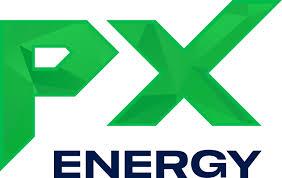Slate’s $25K Electric Dream: The First Car You’ll Build With Them

In a world where electric vehicles are battling for dominance through cutting-edge tech, sleek design, and billion-dollar ad budgets, Slate—a young startup with big ambitions—is heading in a radically different direction. With its roots in Amazon-era innovation and new hubs in Detroit, Long Beach, and Indiana, the company isn't just aiming to build its first vehicle by 2026. It’s trying to change how we think about what it means to own and shape a car.
But here’s where it gets really unconventional: Slate’s not building just any electric truck. It’s building one that’s open-source—yes, you read that right.
A $25K Truck With Hackable DNA
In tech circles, "open-source" refers to the kind of software where anyone can see, modify, and improve the source code. Think Firefox. Now imagine applying that philosophy to a $25,000 two-seat electric pickup. That’s exactly what Slate is doing.
For the average driver, that might sound... unnecessary. After all, most people just want a car that starts every morning, drives safely, and maybe connects to Bluetooth without needing a PhD. So why focus on open-source? According to insiders, Slate isn’t just trying to sell a truck. They're trying to spark a movement—one where owners become co-creators.
Their slogan says it all: “WE BUILT IT. YOU MAKE IT.”
That ethos was reflected in an internal tool once dubbed “Slate University,” designed to help users customize their vehicles down to the software layer. Think of it as GitHub meets garage culture. They’re banking on the idea that new-age buyers—especially first-time owners—might find excitement in personalization over pure horsepower.
It’s a strategy that has worked for niche communities like 3D printer enthusiasts. But can that same energy be transferred to something as utilitarian as a pickup truck? That's the $25,000 question.
Still No Factory, Still No Problem?
Despite plans to roll out production by late 2026, Slate hasn’t confirmed where it’ll actually build its debut truck. Indiana is a likely bet—they’re already setting up there—but whether they’ll occupy an old auto plant or break ground on a new one remains uncertain.
Some suggest this ambiguity could delay things. And yes, constructing a new factory from scratch is no small feat. But it’s not impossible. Tesla managed to launch production at its Texas Gigafactory within 18 months of shoveling the first patch of dirt. If Slate plays it smart—and if their truck is simple enough—they could still meet the target.
That said, time is ticking.
The Car for People Who Don’t Want a Car?
What makes Slate intriguing is that their ideal buyer might not even like traditional cars. They’re betting on a younger demographic—those who’ve grown up with Reddit threads, Raspberry Pi, and DIY culture. People who’d rather tweak code than compare MPG stats. For them, Slate’s truck isn’t just a vehicle—it’s a canvas.
This approach may not resonate with suburban families eyeing a Toyota RAV4. But for makers, coders, and Gen-Z creators looking to break into car ownership with something fresh, Slate might just be the iPhone moment of EVs—a product built not just to consume, but to tinker with.
The Road Ahead
Until more details surface—from factory plans to actual prototypes—Slate remains more of a dream than a reality. But it’s a bold dream, and that counts for something in an industry that often plays it safe.
In the end, Slate’s mission boils down to this: make a car that doesn’t just drive people around, but draws them in.
And if they pull it off, we might just see the rise of a new category in the auto world: the open-source electric truck you didn’t know you wanted, but suddenly need to build.
Business News
How Executives Can De-Risk Payment Operations in Regulated Industries
Why Your Engine Air Filter Plays a Bigger Role Than You Think
Phoebe Gates-Backed Startup Secures US$30 Million Investment to Fuel AI Shopping Platform
Anthropic’s AI Bubble Warning: A Call for Caution in the Hype-Driven Race
The Ultimate Guide to Backlink Packages and Guest Post Services: Supercharge Your SEO in 2025




















